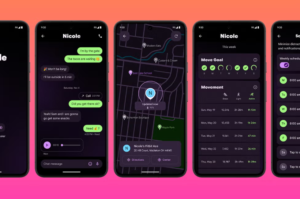Earlier this summer, Google introduced the Fitbit Ace LTE, a new product specifically designed for kids ages 7 to 12. While there are plenty of wearable fitness trackers on the market — including smart watches for women, smart watches for men and smart rings — options tailored for children and tweens are understandably more limited.
That’s what makes the Fitbit Ace LTE stand out. This gamified fitness tracker doubles up as a location tracker and a communication device. For parents hoping to keep their kids away from smartphones for as long as possible, it’s an excellent alternative that can buy you some time.

Google Fitbit Ace LTE
Pros
- Lightweight, stylish design
- Creative interface with games and fitness
- Can swap out bands to unlock new features
- Data not stored permanently
- Features parental restrictions
- Built-in GPS
Cons
- Monthly plan required for calling and messaging
- Can only communicate with the watch via the phone-installed app
- Battery life could be longer
| Weight (without band) | 28.03g |
|---|---|
| Dimensions | 41.04 x 44.9 mm |
| Battery life | Up to 16 hours |
| Water resistant | Up to 50 meters |
| Subscription required | Yes |
| Compatability | Android 11 or newer; iOS 15 or newer |
| Band materials | Polyester yarn |
What is the Fitbit Ace LTE?
The Fitbit Ace may resemble other smart watches for kids, but its interface is entirely unique. Unlike adult models, you won’t find activity tracking or health metrics here. According to Google, the Fitbit Ace “transforms exercise into play and safely helps kids lead more active, independent lives.”
In other words, it’s a device designed to keep kids active and entertained while giving parents a way to monitor them without resorting to a smartphone too soon.
How does it compare to other smart watches for kids?
The Google Fitbit Ace LTE integrates LTE connectivity directly into the fitness tracker, enabling it to function independently from a smartphone. This feature is particularly valuable for children and active users who may not always carry a phone — or may not own one yet.
Noelle, the 10-year-old niece of GH Institute Reviews Analyst Amanda Constantine,
has been testing the Google Fitbit Ace since its launch. “I personally downloaded the Fitbit Ace app to message her, and it’s been so fun to send her texts and voice memos on her own device,” shares Constantine.
The Fitbit Ace LTE is a significant upgrade from previous models, like the Fitbit Ace 3. While both devices track activity levels, this latest version includes cellular connectivity and GPS location tracking. However, it does require a monthly subscription (more on pricing details later) and does not offer sleep tracking.
The Fitbit Ace LTE also features a new square touchscreen, similar to other popular Fitbit models like the Fitbit Versa 4, distinguishing it from the slimmer, rectangular design of the Fitbit Ace 3. During testing, our experts found the bright OLED display to be ideal — not too small to strain visibility and not too large to feel bulky.
While there are fewer smart watches available for kids compared to the variety of options for adults, the Apple Watch SE is another popular choice for parents. At under $200, it offers an affordable price, built-in GPS and Family Setup, allowing kids to access features like making calls, sending messages and sharing their location without needing their own iPhone. Parents can still set restrictions, such as Schooltime, but what the Apple Watch SE lacks is the Fitbit Ace LTE’s unique gamified experience designed to motivate kids to stay active throughout the day.
Games galore and Eejie interaction
The Fitbit Ace is packed with a variety of engaging proprietary games, but there’s a catch: the only way to unlock “game time” is by moving a certain amount throughout the day. This progress is tracked on the watch’s home screen via the “Noodle,” an activity ring that closes once you’ve met your daily movement goal. The games are interval-based and typically last around five minutes or less.
Our kid testers found the Ace’s games entertaining. “My niece is a fan of most of the games available on the watch and likes that there’s activity involved in them,” shares Constantine. “She enjoys wearing the watch to her cross-country running practices because it boosts her step count, which helps with her games.”
As for data and metrics, you and your child won’t be able to see specific details like how many miles they’ve run or their pace, but you can track how long they were active, whether they were jumping on a trampoline or playing hide and seek.

In addition to games, each Fitbit Ace comes with an “eejie” — a cute, customizable creature that “lives” within the watch, reminiscent of a Tamagotchi.





